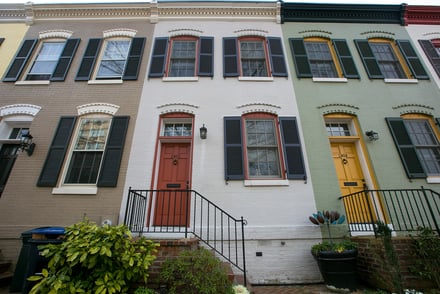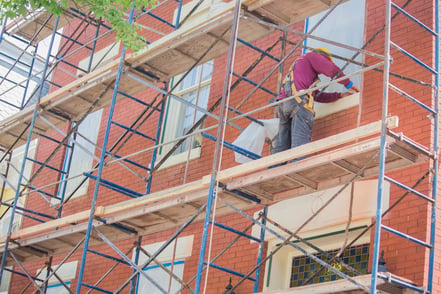Have you ever noticed a coating of white powdery stuff on your exterior brick walls? The technical name for this white powder is efflorescence. Although undesirable, efflorescence is usually not harmful to brick masonry. It is, however, an indication of the presence of excess water in the masonry, which can lead to more serious issues.
Q: What is Efflorescence?
It is a harmless but unsightly accumulation of minerals and salts on masonry surfaces, such as brick, cement, and sometimes stone. It generally occurs where there is excess moisture, and is a symptom of excess moisture that can be problematic.
Q: What Are the Causes
Masonry building materials (brick, cement, stone, stucco, mortar) contain natural salts (mostly, sodium and calcium chloride). These salts remain trapped within masonry in stable form until they are dissolved in water. The water can originate from rain, sprinklers, household leaks, or any number of other places.
In the winter, the heat in the building will move outward and drive this moisture in front of it. When the water/salt solution reaches the exterior wall surface the cold, dry air evaporates the water, leaving the salt as a white crystalline growth on the surface. It can occur year-round, but it is most likely to form during the low temperatures of winter.
Q: Is It Possible to Prevent Efflorescence on Brick?
The development of efflorescence requires the presence of soluble salts and moisture. Eliminating either will help prevent or minimize efflorescence. Design and construction practices that promote resistance to water penetration are the most effective methods of preventing efflorescence.
Q. What’s Involved in Removing Efflorescence From Brick Walls?
The removal of efflorescence from the face of masonry is a relatively easy operation. Most efflorescing salts are water-soluble and will disappear without any intervention through normal weathering. It is usually not advisable to wash efflorescence off of the brickwork except in warm, dry weather. Many efflorescing salts can be removed by dry brushing.
If your brick walls have white powdery deposits, contact a masonry contractor who is experienced in all aspects of brick restoration and repair including residential exterior tuckpointing for advice.
Source: TECHNICAL NOTES on Brick Construction
Renaissance Development, a leader in brick restoration and historic preservation, specializes in the restoration of an old brick building’s mortar joints using traditional methods (tuckpointing) and materials. Contact us for a free site visit and project quote.
8/1/19 3:38 PM

